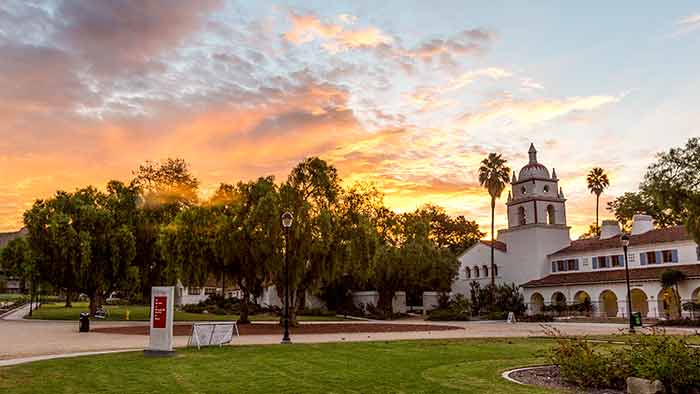About California State University, Channel Islands
California State University, Channel Islands (CI) is a four-year public university located in Camarillo, California. The university places students at the center of the educational experience and provides individual attention, up-to-date technology, and classroom instruction, supported by notable faculty research. More than 4,000 CI students benefit from interdisciplinary, multicultural, and international perspectives combined with an experiential and service learning emphasis.

In 2004, California State University, Channel Islands (CI) adopted the Serena Collage web content management system (CMS). In 2009, Serena announced it was no longer going to further develop the CMS. With this announcement, it became clear to CI that Collage would not be able to meet the institution’s future needs. This was unfortunate, as CI’s more than 140 content contributors were familiar with and comfortable using Collage to edit their 220 unique websites. Knowing that user buy-in is critical for a CMS to be successful, it was imperative that CI find another system that would be well-received by their content contributors. With their strong collaborative culture and a well-defined strategic planning process, the university set out to find and implement a replacement CMS.
Extensive Evaluation
CI looked at approximately twenty different CMS vendors and solutions. Using their previous CMS search experience, they were able to develop a list of 60 criteria on which to assess each system. They narrowed the vendor list down to six through an RFP process, and then chose three systems for a hands-on evaluation by their most proficient users. At the end of the year-long evaluation process, CI chose Modern Campus' Modern Campus CMS. From a user interface standpoint, which was CI’s number one criterion, Modern Campus CMS was the clear winner and the CMS users were happy with it. The evaluation team also sought out higher education institutions that were currently using Modern Campus CMS and received positive feedback from each. The decision to go with Modern Campus CMS was a done deal.
Planning for Migration
Peter Mosinskis, CI’s Director of IT Strategy, found that it was important to have a small migration team to move from Collage to Modern Campus CMS. The team consisted of a web designer and developer, web supervisor, and a few student assistants. Regular meetings were held with the team, as well as faculty and staff users, to troubleshoot problems throughout the comprehensive process
At the very start of the project, the team had to consider what content to migrate first and whether they should stay with the existing website design. The early testing of Modern Campus CMS led to their decision to focus on learning the new system with the design they already had. An inventory they gathered of CI’s existing web content, design templates, and content editors helped prioritize the order of the content to be moved.
Training while Migrating
Migration from Serena Collage to Modern Campus CMS took place in eight phases. Due to their detailed inventory checklist, the web team was able to easily identify which sites had what scripting language. With this knowledge and additional feedback in the initial phases, CI moved the easiest sites first to see what problems they may encounter. They started with top-level pages from 10 to 15 small and simple department sites and decided to save the home page for last. When necessary, the team rewrote ASP code to PHP and then tested it to make sure it worked.
Keeping track of information proved important. CI’s content ownership identification sheet helped with training. The team notified the content users prior to their pages being moved so they had time to review them and, more importantly, be trained on using the system beforehand. Training was similar to the training they received for their previous CMS, so users were not completely overwhelmed, but it was still customized to the Modern Campus CMS. After becoming more accustomed to the new system and staggered migration, the team was able to start moving more than 30 sites at a time.
We can change the look and feel of any sub-site in an instance just by changing some variables.
Challenges and Time Savers
Most challenges arose early on. When trying to conceptualize how to implement tasks in the new system, the CI team had to turn to their developers for help. As Peter learned, “It’s a matter of adjusting your own expectations. There is no solution that is absolutely perfect.” In addition, CI was in the process of changing servers. The university went from an outdated physical IIS server to Apache running on a Linux virtual machine. So during the cutover period, they had to run both servers.
The real time savers came from working with OmniUpdate. The OmniUpdate implementation and support staff helped CI with a master customizable template (one template that can look like several different designs). Daniel Martinez, the university’s Web Supervisor, explained, “We can change the look and feel of any sub-site in an instance just by changing some variables.” To facilitate migration, CI also used OmniUpdate’s Content Migration Tool, which they customized to meet their needs. The tool converted the exported Serena Collage XML files to PCFs and plugged the files into their template. In less than a minute, nearly 300 pages were migrated.
Confidence to Keep Changing
In 2009, CI conducted a survey evaluating their previous CMS and then conducted the same survey after the implementation of Modern Campus CMS. They found that weekly usage doubled while monthly usage was cut in half, indicating more frequent use. With a 250% improvement in user satisfaction, contributors are now more willing than ever to update content, making the CI sites more relevant. The team has seen a noticeable decrease in work order requests, as users are able to handle basic tasks on their own, such as adding a picture to a web page.
The migration from Serena Collage to Modern Campus CMS took approximately 1,000 total CI employee hours, mostly allocated in the beginning, and a little less than a year to complete. Now that the project is done and management of their web content is once again under control, CI has revisited the idea of a website redesign. Ryan Garcia, Senior Web Designer, stated, “One of the main reasons we are considering a transition into a new design is because we have a great content management system in place.”

Tackle your biggest challenges